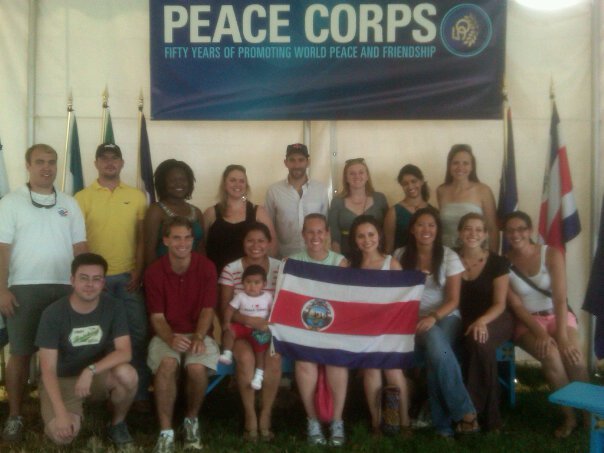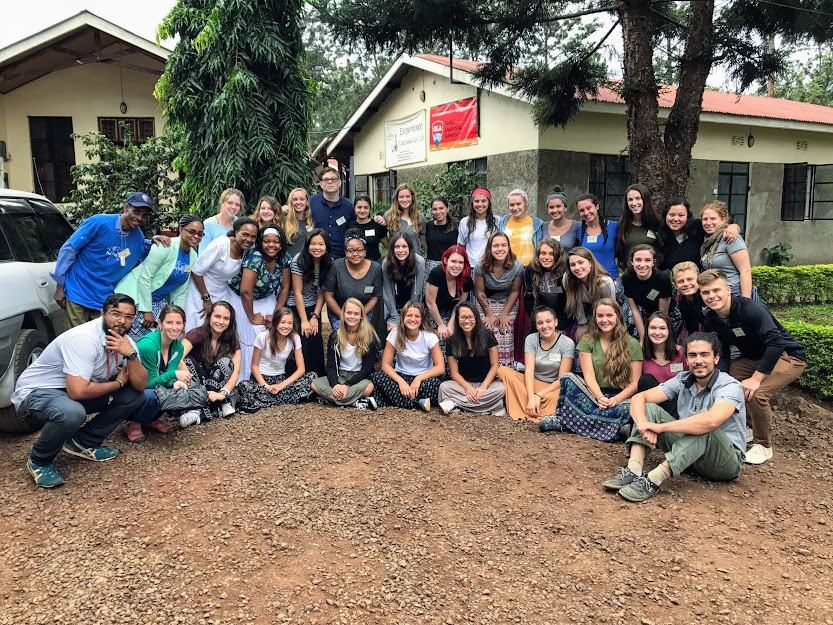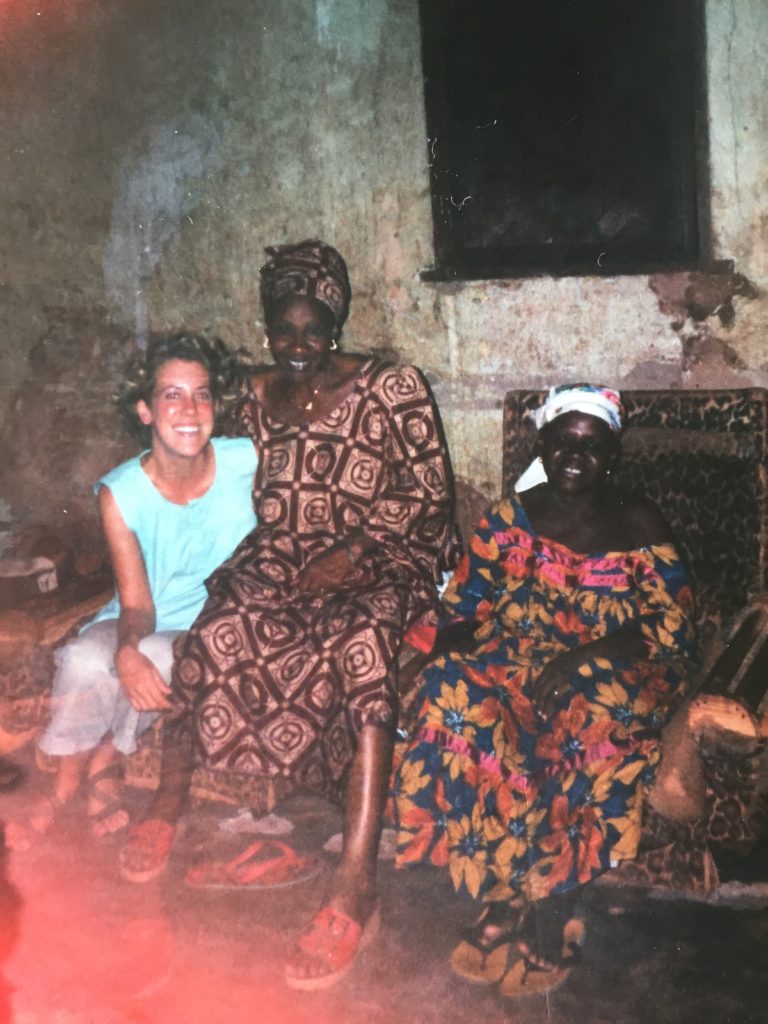At GLA, we like to think of ourselves as a “Peace Corps for teens” of sorts: a great way for young people to test the waters of living and volunteering abroad on community-driven projects. While the time commitment is much different (two weeks vs two years), many of the guiding principals and model are the same. As such, it’s not surprise that many of the staff members who choose to work for GLA have a background with the Peace Corps, from our founder Andrew Motiwalla to our summer staff of in-country Directors and Mentors.
Read on to learn about a few of their experiences and to get a feel for a day in the life of a Peace Corps volunteer. We have staff with experience across the world, from Central America to Africa to Asia and beyond.
Airon Whitt – International Director (Costa Rica 2017 & 2020)
Peace Corps site: La Cruz, Costa Rica (2017-2019)
Hometown: Hattiesburg, Mississippi
Type of project or role: Community and Economic Development
Words to live by: “Low Expectations are the Key to Happiness”
Education: BA in Sustainable Tourism and Development Management, University of Hawaii at Manoa; Masters of International Policy and Development & Masters of Business Administration from Middlebury Institute of International Studies
Fun fact: Between college study abroad, Peace Corps, and summers with GLA, Airon has spend a good chunk of time in Costa Rica– it just keeps calling her back!

Tell us about your project! Did you find it rewarding?
There’s a common saying in the Peace Corps: “We rarely sit in the shade of the trees we plant.” Meaning that far too often, and especially in the Peace Corps, we never actually see with our own eyes if our efforts were long lasting or even impactful! But I did work with many local artists to develop handicrafts they could sell to tourists in local a gift shop we opened. I also worked with a lovely group of senior citizens who are also still making and selling their handicrafts to fund some fun activities for their group. Finally, I spent a large chunk of time working one-on-one with local small hotel and restaurant owners, consulting them on financial management, marketing, and customer service, all of which I imagine bettered their businesses. All I can hope for is that community members are still reaping the benefits of the hard work they put in to better their communities.
In your view, in what ways is a GLA program a good “practice” experience for those interested in volunteering with the Peace Corps after college?
Travel isn’t easy. Especially long term travel. Learning that it’s not all the glitz and glamour that is often shown to us on social media like Instagram is a tough realization for some young people. There will be long bus rides, hot days, days when it feels like no one speaks your language, days when you’re working so hard for something and you don’t even know if it matters. These are these realities of life, but especially the realities of the Peace Corps. GLA give students a tiny little taste of this. As a GLA participant students have the choice to push through these hardships and cultural differences, or to sit back and complain about them. What I guarantee you is that if you do push through the discomfort, push yourself to new boundaries of your comfort zone, spend a little time in that fear zone, and eventually make it to the learning zone you will gain invaluable knowledge and first hand experiences of what it takes to respectfully arrive to a country, ask its residents if you can live with them and learn from them, and them ultimately integrate into a community that will soon feel like home. If you take your short time with GLA and pretend like it is the start of a 2 year adventure you will certainly gain a bit of perspective about the realities of being a Peace Corps Volunteer.
When you were young, what were your experiences abroad like?
I’m still young! Just kidding!! My parents always loved to explore and travel, and we were lucky that they wanted to take us with them. 🙂 My father used to drive us from Mississippi out to places like Wyoming and Montana, then one summer he discovered how easy it was to fly to Mexico and so began our international travel experience. We love tropical places and to scuba dive so we always seemed to end up in places like the Dominican Republic, Honduras, Hawaii, and of course Costa Rica. It was through these travels that I fell in love with the tourism industry, and mainly fancy hotels – not because we stayed in them, but because we didn’t. My dad always sought out off the beaten places places which always had me yearning for a fancy hotel, but now in my 30’s I’m so happy he pushed us to explore fun and funky places as I appreciate the authentic experiences of traveling far more than a cookie cutter hotel.
What is your most memorable Peace Corps moment? Most memorable GLA moment?
So many to choose from! I really love to make art, ceramics specifically. One of my favorite memories was a workshop I helped design that taught young people the traditional ceramics techniques of a woman in my town. She was the last known living woman making pottery in this way and we were able to have her teach those techniques to the next generation. Something I truly loved being a part of! As for GLA this is where it gets really tough! There were so many fun moments! I really loved being in charge of designing the service projects. I was able to ensure (to the best of my knowledge) that they were sustainable and community driven projects, that the community of Parrita wanted to maintain once our GLA summer was over. I also just LOVED all the adventure! River tubing, national park snorkeling adventures, and zip-lining! So much to be had in both experiences!
Lisa Brancheau – Regional Director of Programs
Peace Corp site: Comte, Costa Rica
Project / area of expertise: Youth Development
Years at GLA: 3
Fun fact: Lisa met her husband (and former GLA Mentor and Regional Director) during her time as a Peace Corps volunteer.

Hi Lisa! What was the most rewarding part of your Peace Corps experience? The most difficult?
By far the most rewarding was feeling part of the community. The hours I spent on people’s porch drinking cafecito, chatting, and laughing. By far my most rewarding project was setting up a student-run radio. A student at the high school where I worked was taking classes on the weekends to become a DJ and wanted to start a radio at the school. The principal approved it because through the radio project he would also get an intercom system that could be used to communicate announcements across the campus rather than sending someone to go classroom to classroom. When I did my community needs assessment, is a required part of Peace Corps service, one challenge identified was that many of the high school students took the bus to and from school and there was a need for extra-curriculuar activities during the school day. I applied to fundraise on a Peace Corps sponsored website and raised close to $3,000 from friends, families and strangers to purchase the technology. The student trained his classmates and they would play music and have shows during lunch and class breaks. Overall, it was a really fun project and I’m glad I was able to help a student explore his passion.
Staying motivated was sometimes a challenge. My projects was “youth development” which can be interpreted very broadly. In the U.S. we’re so focused on productivity and what can be quantified (# of projects, participants, classes, etc.) There would be weeks where I felt like I got nothing done but I showed up and talked to people and discussed ideas and kept trying to move things forward. You really have to be self-motivated and adapt the concept of productivity based on where you are.
How easy was it to connect with other volunteers or expats during your time in Costa Rica?
I served 2006 – 2008 so there was no internet in my site and smartphones hadn’t yet reached Costa Rica. I hung my basic cell phone in a sock on my window where I would get enough service to receive and send text messages. I was fortunate that my host family had a landline that my parents would call me on once a week. As a volunteer you have 2 – 3 nights “out of site” each month and usually I would meet up with friends at a beach somewhere even if just to speak English, hang out in air conditioning and eat something other than rice and beans.
Do you feel like you had a lasting impact? Do you still keep in touch with those you met?
The impact is more in the relationships I developed within the community and the cross-cultural exchange. My host family is still like a second family. I keep in touch with them through Facebook, Instagram, and WhatsApp. I’ve been fortunate to have the opportunity to return to Costa Rica multiple times since leaving and make a point to visit my host brother who lives in the capital. As you mentioned, I met my husband in the Peace Corps and many of my closest friends to this day are the friends I made in the Peace Corps. Honestly, I think it stems from Peace Corps being such a dramatic shift in lifestyle, work, language, that we have all bonded over this shared, intense experience.
What advice would you give young people who are considering becoming a Peace Corps volunteer after college?
1. You get out what you put in to it. With smartphones and many destinations have cellular data it can be easier than ever to stay connected with your life back home. Be intentional about focusing on getting to know your community.
2. Use your resources! There were so many activities, curricula and helpful resources from previous PCVs that I could use in my community. Your fellow PCVs will be your support system for those bad days and can share a laugh with you when something completely crazy happens. It was so comforting to know if something serious ever happened, the Peace Corps staff would be there to help navigate it.
Aseem Kever – International Director (Tanzania 2017, Thailand 2020)
Peace Corps site: Buriram Province, Thailand
Hometown: Mombasa, Kenya. Moved to Orange County, California in 2005
Type of project or role: Youth Development
Education: Bachelors of Arts in Political Economy from University of California Berkeley

How’s it going, Aseem? What inspired you to join the Peace Corps?
I was inspired by the idea of dedicating a twenty seven month period of my life in the service of others. I was also greatly inspired by the experiences of other GLA Directors who had served in the Peace Corps.
Walk us through a typical day.
On a typical day at the school I ride my bicycle from my Peace Corps house to the schools. At the schools I work with youth of different ages teaching life skills and critical thinking through play and engaging activities. A typical day at the school starts about 8:30 am and ends around 4:00 pm. On days that I work at the government office I work with a local team to help plan and organize activities for the youth in the community.
What do you love about your new community? What adjustment has been the most difficult?
I love the style of life in my new community and how welcoming the people are. The pace of life in my community is starkly different from the experiences in most American cities. The community here is also very well connected and the people are very welcoming and kind. The most difficult adjustment has been understanding cultural differences and how that can affect work and personal relationships.
What is your most memorable Peace Corps moment? Most memorable GLA moment?
My most memorable Peace Corps moment occurred during the first three months during Pre-Service Training when we were introduced to our host families who would be with us and guide us through our first ten weeks in Thailand. It was my first experience of what life in Thailand would be like and I was very fortunate to be placed with a great host family. My most memorable GLA moment was taking our students in Tanzania on safari and just seeing the absolute look of awe on the faces of the students as they gazed upon the wild animals in their natural habitat.
Julie Aitcheson – International Director (Tanzania 2019, Bali 2020)
Peace Corps site: Kankounadeni Village, Burkina Faso
Hometown: Montpelier, VT
Type of project or role: Health Education Volunteer
Words to live by: “Being the butt of a joke can be a great ice breaker!”
Education: B.A. Speech Communication, M.S. Environmental Education

What inspired you to join the Peace Corps?
I’ve always been a devoted traveler and loved the idea of becoming a part of a community and THEN attempting to be of service from within it. Two years of service in a remote rural village in another country seemed, to my 23 year-old self, like the biggest commitment I could imagine, and I relished the challenge.
What was the application process like? Did you apply for many locations?
The application took a very long time, with a lot of documentation and a series of interviews. I believe it was a full year before I received my assignment. I stated a preference for a French-speaking African nation, and that’s what I got!
Walk us through a typical day.
Each day would be different depending on the work that needed to be done, but typically I would:
- Wake early (just before sunrise) and go for a run down the dirt road winding through the village.
- Then I would take a bucket bath in my small enclosure, fix breakfast on my little two-burner stove, and refill my water barrel from the well behind the clinic.
- Many days involved traveling out to more remote villages to do surveys, trouble-shoot projects, or document vaccinations.
- Sieste (a time of rest during the hottest part of the day) would start after lunch and last until around 3:00
- I would sit out on my porch and wait for the kids to pass by on their way back from school for an impromptu language lesson.
- In the afternoon I would take a walk through the village and surrounding bush, come home to prepare dinner and plan for the next day, write letters, read, and
- Go to bed before I used up all of the kerosene in my lamps!
In what ways is a GLA program a good “practice” experience for those interested in joining the PC after college?
GLA offers a good practice experience in the sense that the principles of giving what is asked and grounding service in local experience, expertise, and priorities are also Peace Corps service principles. GLA presents an opportunity to learn about the complexities of service (voluntourism, service learning, etc.) and cultural exchange, like the Peace Corps, while still offering an adventure component to help students enjoy unique opportunities for exploration.
